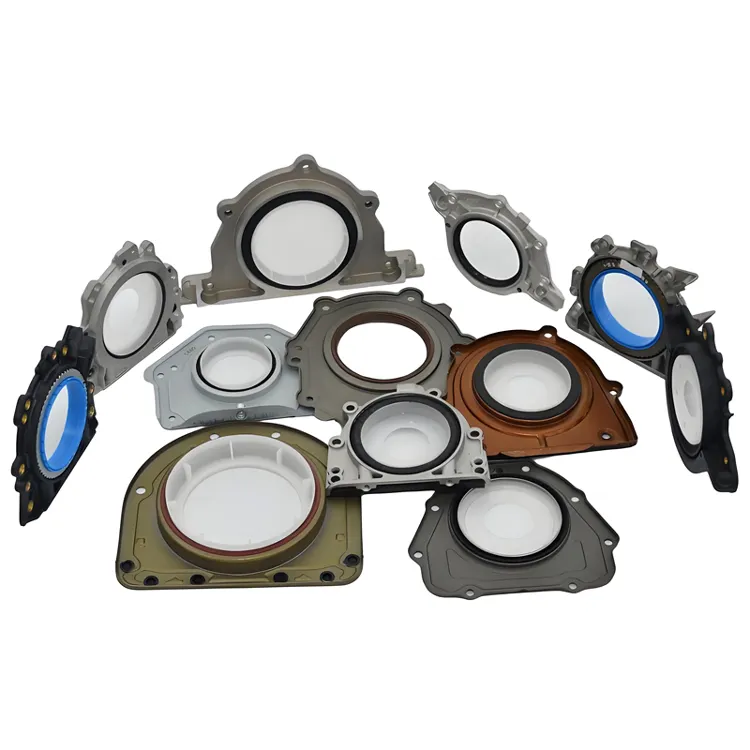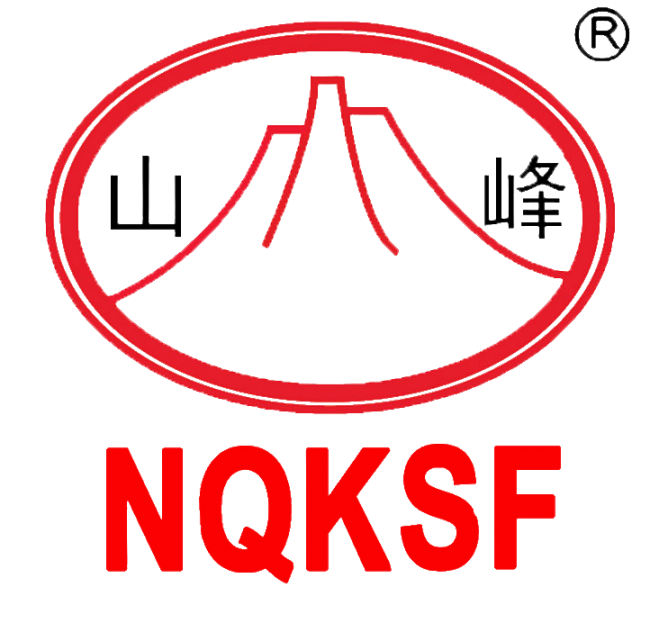מצוינות הנדסיות בפתרונות חותמות מתקדמים
החותמת V-Ring המחוזקת בבד מייצגת קפיצה טכנולוגית בתחום החותמות התעשייתיות, המשלבת מדע חומרים עיקש בהנדסה מדויקת כדי לאפשר ביצועים יוצאי דופן בתנאי קיצון. החותמות המתקדמות הללו שינו את הדרך בה התעשייה מתקרבת ליישומים כבדי משקל, ומציעות התנגדות בלתי שווייה ללחצים קיצוניים ולתנאי סביבה קשים. שילוב הבד המחוזק מבנה החותמת יוצר מחסום עוצמתי נגד בלאי תוך שמירה על גמישות חיונית לביצועי חותמת אופטימליים.

רכיבים מרכזיים וחדשנות בחומרים
טכנולוגיית הגזמה מתקדמת
לב ביצועים הגבוהים של החוגה הגיזומית בצורת V נמצאת המבנה המורכב שלה. חומרי הגיזום, אשר לרוב כוללים סיבים סינתטיים בעלי חוזק גבוה כמו ארמיד או פוליאסטר, משובצים בצורה אסטרטגית בתוך המטריצה האלסטומרית. מבנה מורכב זה יוצר שלד עוצמתי שמשפר משמעותית את יכולת הנשיאה של החוגה, תוך שמירה על הגמישות הדרושה ליישומים דינמיים.
نمط הגזמה נבנה כך שיוכל לחלק את המאמץ בצורה שווה על פני שטח החוגה, ולמנוע שחיקה מקומית thereby להאריך את תוחלת החיים הפעולה שלה. הגישה המبتكرة הזו מאפשרת לחוגה הגיזומית בצורת V להתמודד עם עומסים רדיאליים ואקסיאליים משמעותיים מבלי לפגוע בשלמות החוגה.
בחירת האלסטומר ואופטימיזציה
הרכיב האלסטומרי של החותם בצורת V מונע ב ביצועים שלו. תבניות מתקדמות, כמו ניטריל (NBR), פלואורו-פחמן (FKM) או תבניות מיוחדות, נבחרות בזהירות על פי דרישות היישום הספציפיות. חומרים אלו מספקים תכונות חיוניות, כולל עמידות כימית, יציבות טמפרטורה ותכונות מתאימות של שקיעת לחיצה.
באמצעות מחקר ופיתוח נרחב, יצרנים שיפרו את תבניות האלסטומרים כדי להשיג איזון אידיאלי בין קשיות לגמישות. זה מבטיח שהחותם ממשיך להפעיל לחץ אחיד תוך כדי התנגדות לעיוות תחת עומסים כבדים.
עיצוב מבני והפצה של עומס
אופטימיזציה גאומטרית לתמיכה בעומס
הפרופיל הייחודי בצורת V של החתימה המוגבשת עם חומר מחוזק אינו רק בחירה עיצובית, אלא החלטה הנדסית מושכלת. גאומטריה זו יוצרת דפוס התפלגות לחץ אופטימלי שמגביר את יעילות החיתוך תחת עומסי עבודה כבדים. הזווית והממדים של ה-V מחושבים במדויק כדי למקסם את לחץ המגע תוך מינימום של בلى.
הפרופיל של החותם פועל בשילוב עם הגיזור המeger כדי ליצור אפקט של העצמת עצמית, שבו הלחץ הגבוה במערכת למעשה משפר את ביצועי החותם. המאפיין הייחודי הזה הופך את החותם בצורת V המeger ליעיל במיוחד ביישומים בעלי לחץ גבוה.
מערכות ניהול עומס דינמי
חומות V-リング מחוזקות בבד מודרני כוללות תכונות מתקדמות של ניהול עומס המסייעות בהפצה אחידה של כוחות על פני שטח החותם. אלמנטים אלה כוללים משטחי מגע הנדסיים בקפידה, גאומטריות שפה אופטימליות, ומיקום אסטרטגי של הגזמות התומכות, הכול פועלות יחדיו כדי להתמודד עם עומסים סטטיים ודינמיים באופן יעיל.
היכולת של החותם לשמור על יציבות תחת תנאי עומס משתנים מוגזמת גם כן על ידי מבני תמיכה הנדסיים במדויק המונעים עיוות תוך אפשור תנועה הכרחית לביצוע החותם האופטימלי.
תכונות לשיפור הביצועים
מנחות התנגדות לבלאי
חוגת האטם בצורת V מותכת בבד תומך מכילה מספר מנגנונים לאיטום התנגדות לאביזION, דבר המאריך משמעותית את אורך החיים שלה בטעינה כבדה. התיזור בבד מעצים לא רק את האטם אלא גם יוצר מחסום עמיד בפני אביזION защиון בפני שחיקה ולחץ מכאניקלי. טיפולים בשטח וเคลיטות מיוחדות עשויות להיות מיושמות כדי להגביר את ההתנגדות לאביזION ביישומים קשים במיוחד.
שיטות עיבוד מתקדמות של חומרים מבטיחות הפצה אחידה של סיבי התיזור, ומונעות נקודות חלשות שיכולות להוביל לאביזION מוקדם או לשבירה. תשומת הלב הזו לפרטים בייצור מביאה לביצועים קבועים גם תחת טעינות כבדות ממושכות.
פתרונות ניהול תרמי
פעולה תחת עומסים כבדים לרוב יוצרת חום משמעותי, אשר עשוי להשפיע על ביצועים וחיי אורך של החותמים. חותמי טבעת V מותקנים עם בד address את האתגר הזה באמצעות תכונות ניהול טרמי חדשניות. החומרים והעיצוב תומכים בפיזור יעיל של החום, בעוד שתרכובות מיוחדות שומרות על תכונותיהן בטווח רחב של טמפרטורות.
מבנה החותם כולל אלמנטים ליציבת טרמית שמעדיפים עיוות ושמורים על יציבות ממדית גם תחת טמפרטורות מוגזמות שנובעות מפעולה תחת עומסים כבדים.
הדברים שצריך לקחת בחשבון בהתקנה והתחזוקה
דרישות לתקנת מקצועית
התקנה נכונה היא קריטית לביצועים אופטימליים של חותמי טבעת V מותקנים עם בד תחת עומסים כבדים. תהליך ההתקנה חייב לעקוב אחר נהלים מדויקים כדי להבטיח מיקום נכון ולמנוע פגיעה בתכונות המרכזיות של החותם. יתכן ותידרשנה כלים ושיטות מיוחדות כדי לשמור על שלמות החותם במהלך ההתקנה.
הנחיות ההתקנה כוללות לרוב דרישות מומנט מסוימות, פרוטוקולי יישור ודרישות הכנת משטח שיש לעקוב אחריהם כדי להשיג ביצועי החדרה אופטימליים.
אסטרטגיות תחזוקה מונעת
למרות ששסתומי V טבעת מחוזקות בבד נועדו ללקיחות, יישום אסטרטגיות תחזוקה מתאימות יכול להאריך את תקופת השירות שלהן. פרוטוקולי בדיקה קבועים צריכים לבדוק דפוסי בלאי, יושר יישור נכון וכל סימני דגרדציה. לוחות תחזוקה צריכים להתאים ליישום הספציפי ולתנאי הפעולה.
שיטות תחזוקה פרוגנוסטיות, כמו פיקוח על מצב ו הערכות תקופתיות של הביצועים, עוזרות לזהות בעיות פוטנציאליות לפני שהן משפיעות על ביצועי השסתום או גורמות לכישלון.
שאלות נפוצות
מה גורם לשסתומי V טבעת מחוזקות בבד להיות מוכרים ליישומים של עומסים כבדים?
חיבורים מחוזקים בבד בצורת V מצטיינים ביישומים של עומסים כבדים בזכות הבנייה המשלבת בד עמיד בחוזק עם אלסטומרים מיוחדים. עיצוב זה מספק התפלגות עומס מיטבית, התנגדות לבלאי ושמירה על אפקטיביות החסימה תחת לחצים קיצוניים.
כמה זמן יכול חיבוץ מחוזק בבד בצורת V לשרוד typית תחת עומסים כבדים?
אורך חיי השירות של חיבוץ מחוזק בבד בצורת V תלוי בגורמים רבים, בהם תנאי הפעולה, ההתקנה הנכונה והתפעול התקין. בתנאים אידיאליים ובתפעול תקין, חיבוצים אלו יכולים לפעול בצורה יעילה מספר שנים, לרוב vượt על תוחלת החיים של חיבוצים מסורתיים פי 2-3.
מהן מגבלות הטמפרטורה לחיבוצים מחוזקים בבד בצורת V?
היכולות הטמפרטוריות משתנות בהתאם לחומר האלסטומר ולחומר הגביש המשמשים. תבניות סטנדרטיות פועלות בדרך כלל בצורה אפקטיבית בין -40° צ' ל-+120° צ', בעוד שתבניות מותאמות יכולים להתמודד עם טמפרטורות בטווח של -60° צ' עד +200° צ' או גבוה יותר.

